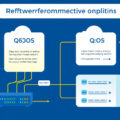Connection issues can be frustrating, whether you’re on a personal device trying to check your emails or in a business setting where downtime could lead to significant losses. Understanding how to troubleshoot these issues effectively can save you time and reduce stress. This guide will equip you with practical steps and best practices to diagnose and resolve common networking problems.

Understanding Connection Issues
Connection problems can manifest in various ways: you might not be able to access websites, face intermittent connectivity drops, or encounter issues with specific apps. The first step in resolving these issues is to determine if the problem lies with your device, your network setup, or your Internet Service Provider (ISP).
Step 1: Isolate the Problem
-
Check Multiple Devices: Start by testing other devices on your network. If they can connect without issues, the problem might be with your device.
-
Verify Hardware Connections: For wired connections, inspect the Ethernet cables, ensuring they are plugged in securely. For wireless connections, confirm that Wi-Fi is enabled on your device.
-
Check for Outages: Before diving deeper into troubleshooting, verify if there’s an ISP service outage affecting your area.
Step 2: Basic Troubleshooting Steps
Here are the fundamental troubleshooting steps that often resolve connectivity issues:
-
Restart Your Devices: Power cycling your modem and router can often resolve minor connection issues. Unplug your devices, wait for about 30 seconds, and then plug them back in. Wait for them to fully reboot before testing your connection again.
-
Forget and Reconnect to Wi-Fi: On Wi-Fi networks, forgetting the network and reconnecting can refresh the connection. Go to your device’s network settings, select the Wi-Fi network, and choose "Forget." Then, reconnect by entering the password again.
-
Run Network Diagnostics: For Windows users, using the built-in Network Troubleshooter can automatically detect and attempt to repair common connection issues. Navigate to Settings > Network & Internet > Status, and select Network Troubleshooter.
-
Check Airplane Mode: Ensure that Airplane Mode is turned off on your device. This can be a simple oversight that cuts off connectivity.
Step 3: Advanced Troubleshooting
If basic steps do not resolve the issue, consider these advanced troubleshooting techniques:
-
Flush the DNS Cache: Sometimes, stale DNS information can cause connectivity problems. Open the Command Prompt and type:
ipconfig /flushdnsThis command will clear the DNS cache.
-
Release and Renew Your IP Address: Use the command prompt to release your current IP and renew it. Type the following commands:
ipconfig /release ipconfig /renew -
Check Network Adapter Settings: Access the Device Manager and look at your network adapter properties. Ensure that the settings align with your network’s requirements, such as the correct wireless mode.
-
Update Network Drivers: Sometimes, outdated drivers can cause connectivity issues. In Device Manager, right-click your network adapter, select Update driver, and follow the prompts.
-
Disable Security Software: Security software and firewalls can occasionally block legitimate traffic. Temporarily disable them to see if they are causing the issue.
Step 4: Check External Factors
-
Inspect for Interference: If you’re using Wi-Fi, physical obstructions and electronic devices can interfere with the signal. Consider relocating your router or using an Ethernet cable for a direct connection.
-
Monitor Network Traffic: Heavy network usage can lead to connectivity problems, especially in a business setting. If possible, monitor who is using the network and the nature of their activities.
-
Check with Your ISP: If connectivity issues persist even after your troubleshooting efforts, it may be time to contact your ISP. They can provide information about line status and any potential disruptions.
Step 5: Best Practices for Ongoing Network Health
-
Keep a Troubleshooting Log: Document the symptoms, diagnostics steps taken, and outcomes. This log can help identify recurring issues and support later troubleshooting.
-
Regularly Update Firmware: Ensure that the firmware on your modem, router, and other network devices is up to date to prevent vulnerabilities and connectivity issues.
-
Optimize Router Placement: For wireless networks, position your router in a central location away from obstructions to maximize coverage.
-
Educate Users on Common Issues: In a business environment, train staff on basic troubleshooting techniques so they can resolve simple issues without needing immediate IT support.
By following these structured steps and best practices, you will be well-equipped to tackle common connection issues effectively and help maintain a stable network environment, whether at home or in the office. Remember, the key to troubleshooting is methodical investigation and patience.



